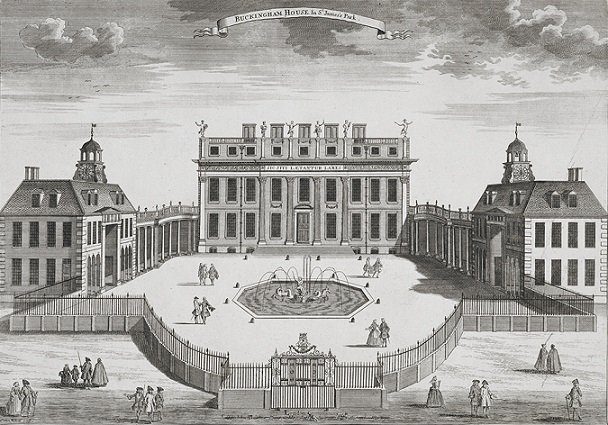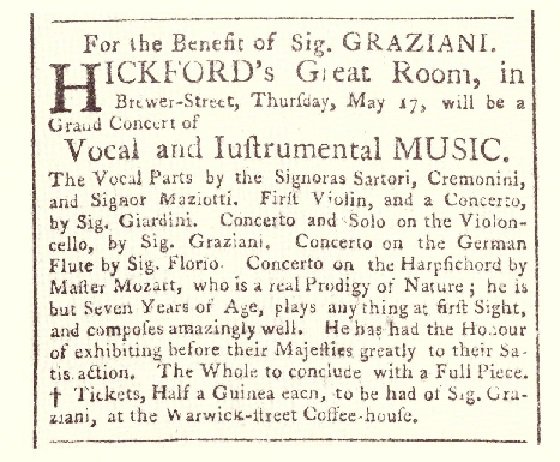Capital of Great Britain. Unlike most other cities in Europe, musical life in London, during the time of the Mozarts’ visit there from April 1764 to July 1765, was diverse, including numerous public entertainments – operas and concerts primarily – in addition to the patronage of the court, the local nobility and the wealthy business class of the city. As such it was attractive not only to local musicians, but to foreign musicians as well, who were often able to find lucrative employment. The area around St James and Soho was the centre of elite, operatic culture, in particular Italian opera at the King’s Theatre in the Haymarket. The two other main theatres, Covent Garden and Drury Lane, produced spoken drama and English operas, while Covent Garden also sponsored performances of Handel’s oratorios. By and large the same audiences for opera and oratorio also patronized concerts in the West End, at Hickford’s concert rooms in Brewer Street or the Spring Gardens room. A private undertaking, the concerts (and other accompanying entertainment) promoted by Theresa Cornelys at Carlisle House in Soho Square, may have provided the model for the later development in London, especially during the 1780s, of public subscription concerts. In the City itself, more middle class and bourgeois audiences differentiated themselves from the West End through amateur musical societies that cultivated ‘ancient’ music including the concerti grossi of Corelli; the repertory of Academy of Ancient Music, founded in 1726, chiefly included Renaissance and early Baroque music. As a commercial centre, London boasted some prominent music publishers including Robert Bremner and Peter Welcker, whose productions primarily included songs, keyboard music and chamber works. Among instruments makers, the keyboard manufacturers Burkhardt Tschudi, Johannes Zumpe and John Broadwood were particularly important.

Buckingham House, 1710
- Mozart Relevance
-
The Mozarts were in London for fifteen months, from April 1764 to July 1765. During his time there, Mozart performed at least twice for George III (27 April and 29 May 1764), and gave or appeared as a guest performer at concerts on 5 and 29 June 1764 and 21 February and 13 May 1765. His sonatas K10-15, dedicated to Queen Charlotte, were published in March 1765 and he additionally composed the symphonies K16 and K19 (and possibly K19a), the aria ‘Va dal furor portata’ K21 and the motet ‘God is Our Refuge’ K20.

Public Advertiser, 9 May 1764
- Date (Mozart)
- 1764-04 to 1765-07
- Location (Mozart)
- London
- Bibliographic Reference
- McVeigh 1993; Jenkins 1998; Templeton 2016